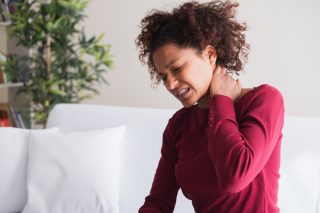Longevity Paid Content. Living with chronic pain can make your life unbearable, and can influence numerous aspects of your life, from cooking, sleeping, hygiene, and even relationships. Some people have lived with chronic pain since their childhood. If you’re tired of dealing with this type of pain, then it’s time you heeded the following tips for how to take your life back.
11 Ways To Tackle Chronic Pain
1. Understand your condition
While the internet is helpful, it may not give you sufficient information about your diagnosis. To understand it better, consider seeking advice from the people you trust. Friends and family are rich sources of information. Nowadays, almost every family has a member who has ever suffered chronic pain. You’ll end up having an appropriate understanding and expectations about your condition and how best you can treat it.
If you feel that your chronic pain is due to a doctor’s negligence, talk to a personal jury like Tario & Associates. Such experts will help you get the compensation you deserve. Some doctors lack an adequate understanding of chronic pain, likely because they’ve never experienced the condition. When seeking healthcare services, it’s safe to get recommendations from a professional doctor who will educate you about your condition and suggest a care plan that’s convenient for you.

tommaso79/shutterstock
2. Meditation and deep breathing
Meditation and deep breathing are great techniques that help you relax and ease your pain. While there are various ways to meditate, the heart has the soothing power of meditation. Focus on your breath, ignore toxic thoughts, and repeat a word several times. Some people prefer deep breathing to relaxation. If this technique appeals to you, find a quiet location, set yourself into a comfortable body position, and ignore distracting thoughts. Identify a spot below your navel and breathe into it. Fill the abdomen with air, and breathe out. Deep breathing is an alternative technique to meditation that can help your body relax and ease the pain.
3. Exercise
Physical exercises release natural endorphins that boost chronic pain relief. These endorphins help block pain signals while improving your mood. Exercise also helps strengthen body muscles, prevent further pain, and re-injury. It also helps reduce weight and heart disease risks. If you’re dealing with chronic pain, consult your doctor to learn which exercise routine is suitable for you.
4. Reduce alcohol intake
Chronic pain causes sleep problems, and alcohol consumption can make the problems grow worse. It’s advisable to drink less alcohol or abstain to reduce the pain and improve your quality of life.
5. Keep a journal of your pain level

sebra/shutterstock
Be sure to schedule follow-up appointments with your doctor in order to monitor your treatment. Update them on how you’ve been feeling since your last visit. The best way to achieve this is by tracking your pain level and activities every day. Keep a journal or log of your pain score. Note your daily pain level on a scale of 1 to 10. For each day, indicate the activities you did. Carry the journal to your doctor to help them understand how you’ve been living with chronic pain.
6. Consume a well-balanced diet
A healthy diet is essential for people living with chronic pain. It helps in the digestion process, weight loss, and improvement of blood sugar levels, and reduction of heart disease risks. If you’re dealing with chronic pain, eat a low-sodium, low-fat diet of whole-grain bread and cereals, lean meats, low-fat milk, yogurt and cheese, cooked dried peas and beans, and fresh vegetables and fruits.
7. Reduce stress
Negative feelings such as anger, stress, anxiety, and depression intensify chronic pain. Learning to control these feelings provides you with a long-term solution to your pain. There are several effective techniques that can help you reduce stress. For instance, you can listen to cool soothing music to lift your mood. Such a technique promotes relaxation and makes your life more comfortable.
Experts have gone further to design relaxation CDs and tapes for mental relaxation. Guided imagery (also called mental imagery relaxation) is a mental escape technique that promotes your mental relaxation. It creates calm, peaceful images in the patient’s mind.
8. Join a support group
When you’re not seeing your doctor, consider meeting others who are dealing with chronic pain. Being in the company of people who understand the pain you’re going through helps you feel less lonely. You can also gain additional wisdom and new skills of coping with your pain. Support groups provide counseling that helps patients to learn more coping skills and how to avoid negative thoughts.
9. Embrace positive thoughts
Positive thoughts help you distract yourself from pain in order to reduce its effects. Instead of focusing on pain, find a hobby to keep your mind busy. While this may not help you avoid pain completely, it can help you take control of your life and enjoy life more. 
10. Biofeedback
Biofeedback is an excellent coping technique that can help you to consciously take control of your body functions, including headaches, anxiety, and chronic pain. Sensors let you see or hear various body functions like muscle tension, body temperature, digestion, and pulse. Biofeedback therapy helps you identify tight muscles and relax them, which helps to relieve the discomfort of conditions like fibromyalgia, TMJ, abdominal pain, and low back pain.
11. Treat it naturally with herbs such as cloves
Prescriptive medications are effective pain relievers, but they may be addictive. To avoid long-term side effects from these medications, cloves can help. For instance, people have been using cloves as a home remedy for toothache pain relief. The herb is as effective as benzocaine gel, and most dentists have adopted it into their practice. Besides, studies have shown that clove contains antioxidant, antiviral, antifungal, and anti-inflammatory properties.
Endnote
A life of chronic pain can subject you to physical, mental, and emotional strain. Millions of people suffer the effects of chronic pain every day. While health providers can help you cope with the condition, there are other ways you can use them to manage pain alongside medical treatment. Meditation, stress management, and joining support groups are effective ways to get your life back.





![women [longevity live]](https://longevitylive.com/wp-content/uploads/2020/01/photo-of-women-walking-down-the-street-1116984-100x100.jpg)










